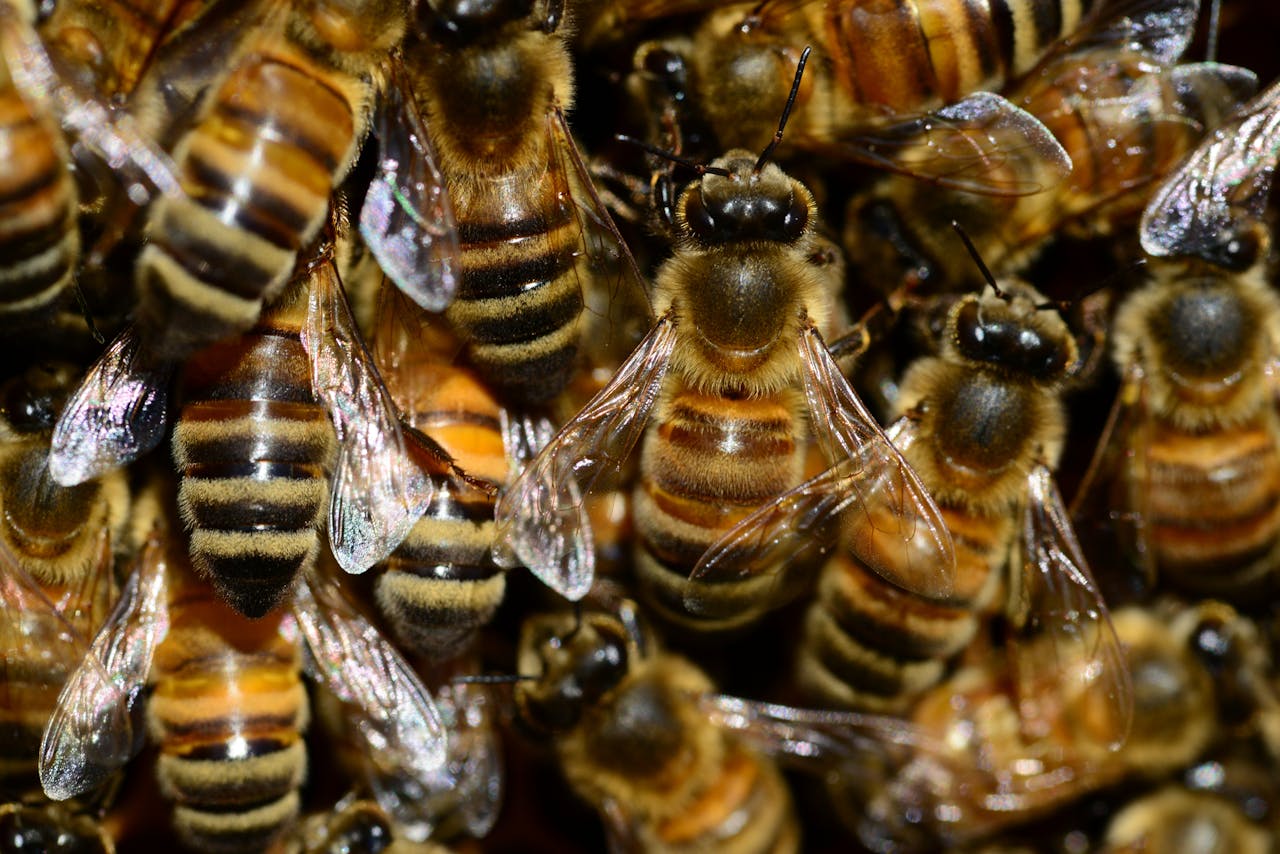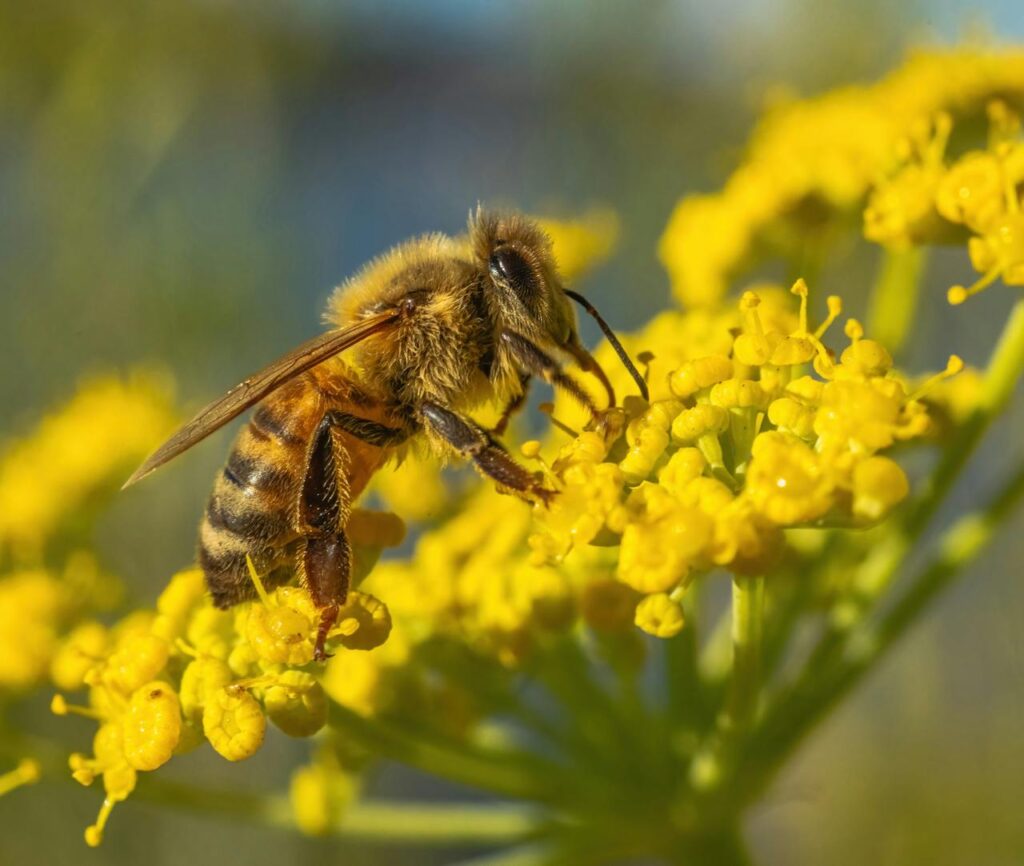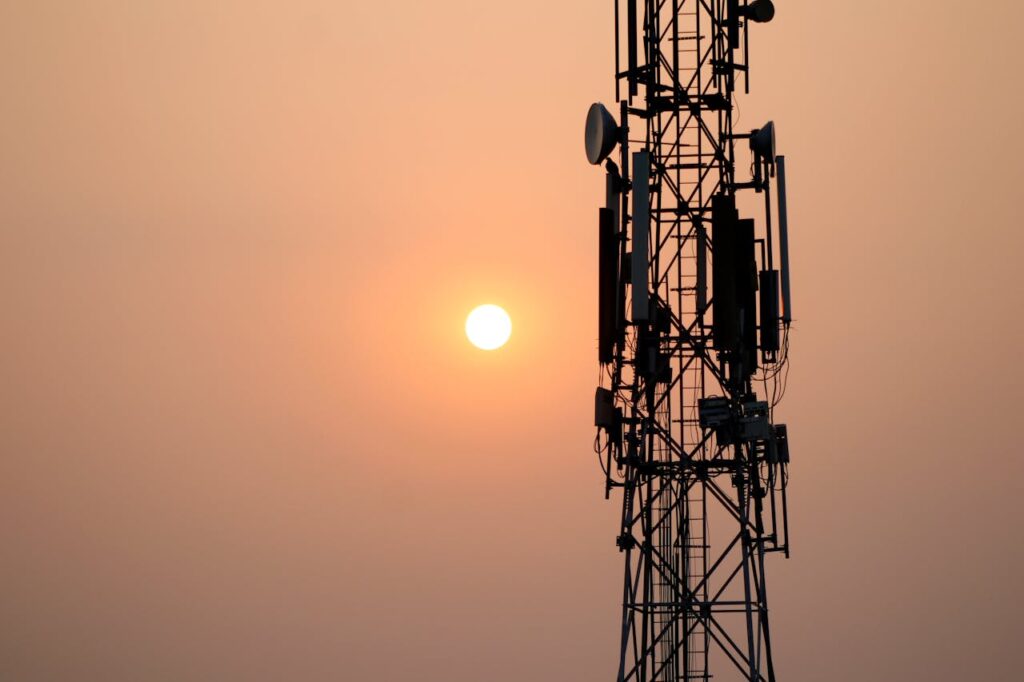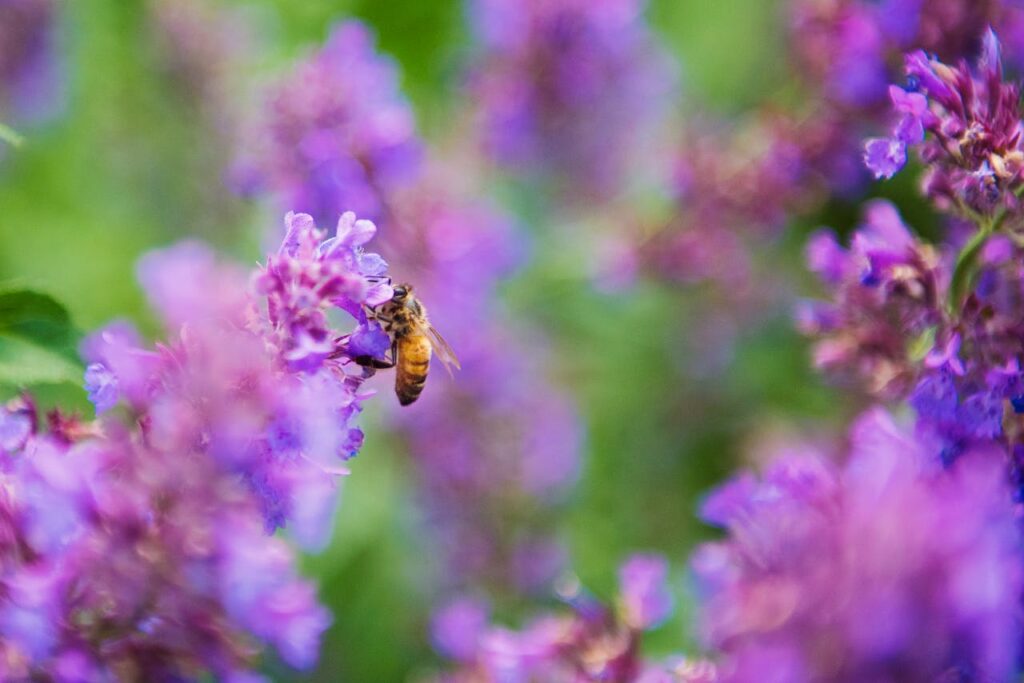Polish Scientists Find Cell Tower Radiation Harms Honey Bees After Just 1 Hour.

You cannot see it. You cannot hear it. Yet it moves through every street, every home, every field. It carries our voices, our videos, our lifelines of connection. But what if these same invisible signals are quietly touching the smallest creatures that keep our world alive? What if the hum that powers our modern lives is also unsettling the wings that power our food supply?
Some of the answers are emerging from unexpected places — deep inside beehives, in the lives of the planet’s most important pollinators. And what scientists are finding may change the way you think about technology, nature, and the fragile threads that connect them both.
The Silent Hum We Don’t Hear
Stand in a garden on a summer morning and close your eyes. You will hear the world’s oldest symphony, the gentle buzz of bees weaving from flower to flower. To most of us, that sound is background music. But for the planet, it is the rhythm of life itself. Bees pollinate one in every three bites of food we eat, from apples to almonds. They are the invisible workforce keeping ecosystems alive.
Now imagine another hum. One you cannot hear, but is everywhere, the steady pulse of wireless communication. Our cities, suburbs, even rural hillsides are crisscrossed by invisible waves called radiofrequency electromagnetic fields (RF EMF). These waves, especially around the 900 megahertz (MHz) range, carry the voices in our calls and the data in our texts. They make our world more connected, but scientists are beginning to ask: what else are they touching?
In recent years, researchers in Poland and Croatia have put this question to the test. Their focus was the honeybee. One Polish team found that just one hour of exposure to 900 MHz signals, the same frequency used by many cell towers, could alter key enzymes in a bee’s body, disrupt protein metabolism, and trigger stress related genes. In Croatia, another group studied bee colonies living for a full year near cell tower antennas. They saw signs of oxidative stress, a kind of biological wear and tear, especially in developing larvae. These were not theoretical effects; they were measurable biological changes, happening even at exposure levels considered “safe” for humans.
If tiny wings can feel the weight of a signal we cannot even sense, what does that mean for the flowers they visit, the crops they feed, and the dinner plates we fill?

One Hour to Disruption – Inside the Polish Lab Study
In a quiet laboratory in Wrocław, Poland, scientists set out to answer a simple but urgent question: How quickly can modern communication signals affect a honeybee’s body? The test subjects were one day old worker bees, fresh from the comb, kept in small wooden cages with food always within reach. They were divided into groups and placed at varying distances from a 900 megahertz (MHz) RF EMF source, simulating exposure levels similar to those near mobile phone base stations. The researchers tested three electric field strengths, 12 volts per meter, 28 volts per meter, and 61 volts per meter, and three exposure durations: fifteen minutes, one hour, and three hours.

What they found was troubling. After just one hour of exposure, key enzymes that drive protein metabolism, alanine aminotransferase (ALT) and aspartate aminotransferase (AST), dropped significantly. These enzymes are central to how a bee processes and uses proteins, and changes in their activity can indicate cellular stress or damage. Another enzyme, gamma glutamyl transpeptidase (GGTP), also fell sharply, but only in bees exposed to the highest field strength for the longest time.
The biochemical changes were just part of the picture. At the genetic level, the bees began producing more of two stress related proteins, heat shock protein 70 (Hsp70) and heat shock protein 90 (Hsp90). These molecules act like emergency repair crews, helping cells refold damaged proteins and restore normal function. Interestingly, other common stress markers, such as Hsp10 and vitellogenin, stayed unchanged, suggesting the bees were not simply overheated but responding to a specific type of stress similar to ultraviolet B (UVB) light exposure.
This reaction is known as a disruption in proteostasis, the balance between protein creation, folding, and breakdown. When that balance tips, the cell must divert energy to repair work, leaving fewer resources for growth, immunity, and other vital functions. For a single bee, that means a weakened ability to cope with additional threats. For a colony, it could be the first quiet step toward decline.
A Year in the Field – What Long Term Exposure Reveals
While the Polish experiment showed how quickly RF EMF can trigger changes in a bee’s body, researchers in Croatia wanted to see what happens when that exposure lasts not just hours, but an entire year. In a study published in Insects in 2024, scientists observed fifteen honeybee colonies placed in three different locations, each with varying levels of 900 megahertz electromagnetic fields emitted from nearby base station antennas.
The colonies lived their normal lives under these conditions, foraging, breeding, and maintaining their hives. Over the months, the researchers measured signs of oxidative stress — the kind of cellular wear and tear caused by an imbalance between harmful reactive oxygen compounds and the body’s ability to neutralize them. The results revealed a clear pattern: larvae, the youngest and most vulnerable stage of the bee’s life, were hit hardest. At the highest exposure levels, they showed elevated thiobarbituric acid reactive substances (TBARS), a marker of lipid peroxidation, meaning damage was occurring to cell membranes.
Antioxidant defenses shifted as well. The activity of enzymes like catalase, superoxide dismutase, and glutathione S transferase varied depending on the bee’s stage of development and the strength of the field. In some cases, these defenses ramped up early, just weeks into exposure, a possible sign that the bees were mobilizing to fight the stress. Yet the overall effects were not uniform, showing that the relationship between exposure and harm is complex.
In follow up observations from related research, colonies at higher field strengths displayed more aggressive and restless behavior, as well as a phenomenon called silent queen replacement — where a queen is replaced without the usual signs of swarming. These behavioral shifts, combined with the physiological stress markers, paint a picture of subtle but persistent pressure on the colony. It is the kind of stress that might not wipe out a hive overnight, but can chip away at its stability season after season.
Why This Matters: From the Hive to Our Table
Honeybees are more than just makers of honey. They are among the planet’s most important pollinators, responsible for helping fertilize over 75 percent of leading food crops grown for human consumption. When a bee visits a flower, it is not only collecting nectar; it is ensuring that apples form, almonds mature, and coffee beans grow. Without this pollination service, food diversity shrinks, prices rise, and ecosystems lose balance.
RF EMF exposure adds to a long list of pressures bees already face: pesticide use, habitat loss, climate change, and parasites like the Varroa mite. Each of these stressors alone can harm a hive, but together, their effects can multiply. That is why the findings from both the Polish and Croatian studies matter so deeply. They suggest that RF EMF, though invisible and silent, may be another hidden layer of strain. It may weaken bees at the cellular level, alter their behavior, and even disrupt the delicate process of raising the next generation.
The challenge is that current electromagnetic field regulations are designed for human health, not for insects or other wildlife. What is considered safe for us may not be safe for a creature whose body mass is measured in milligrams and whose biology operates on a very different scale. Protecting bees means looking beyond our own safety limits and considering the invisible landscapes we are creating in the air around them.
Steps to Protect the Buzz
Protecting bees is not just a beekeeper’s job. It is everyone’s job, because every meal we eat is a collaboration between nature and pollinators. The signals that connect our phones and devices are here to stay, but there are ways we can live in balance with the creatures that keep our planet’s food web alive.
- Give bees breathing room: If you keep hives, place them as far as possible from cell towers or antenna clusters. Even a small shift in location can lessen their exposure to the invisible waves that may cause stress.
- Plant their pantry: Fill backyards, balconies, and community spaces with bee friendly flowers and herbs. Lavender, sunflowers, and rosemary are more than pretty — they are fuel for pollinators and help them build stronger colonies.
- Support cleaner farming: Buy produce from growers who limit pesticide use and protect wild habitats. Every purchase is a vote for farming practices that give bees a fighting chance.
- Back the science: Follow and share credible studies on pollinator health. Push for more research that looks not only at chemicals but also at modern environmental factors like wireless radiation.
- Be a messenger for the messengers: Talk to friends, schools, and local leaders about why bees matter. Share what you learn, not with fear, but with the hope that small actions can ripple into big change.
These steps are simple, but together they form a shield. When we protect the bees, we protect the flowers, the harvest, and ultimately, ourselves.
The Ripple Effect of an Invisible Hum
A honeybee’s wings beat about two hundred times a second. To us, it is a soft buzz in the background. To the planet, it is the sound of seeds becoming orchards, blossoms turning into harvests, and fields feeding families.
The research from Poland and Croatia reveals that even the quiet, invisible waves carrying our phone calls can reach into that rhythm. They can touch a bee’s cells, stir its stress responses, and over time alter the way a colony lives and grows. These changes may be small at first, hidden from the human eye, but in nature, small shifts can tip the balance toward survival or collapse.

We live in a connected world, linked by signals in the air and by the living threads of our ecosystems. If a hum we cannot hear can shake the smallest wings, imagine what it could do to the very roots of life. The choice before us is not between progress and protection. It is whether we are willing to shape progress in a way that guards the life that sustains us.
The next time you hear that gentle buzz in a garden, remember this. Those wings are carrying more than pollen. They are carrying the future. And the future is in our hands.
Loading...

